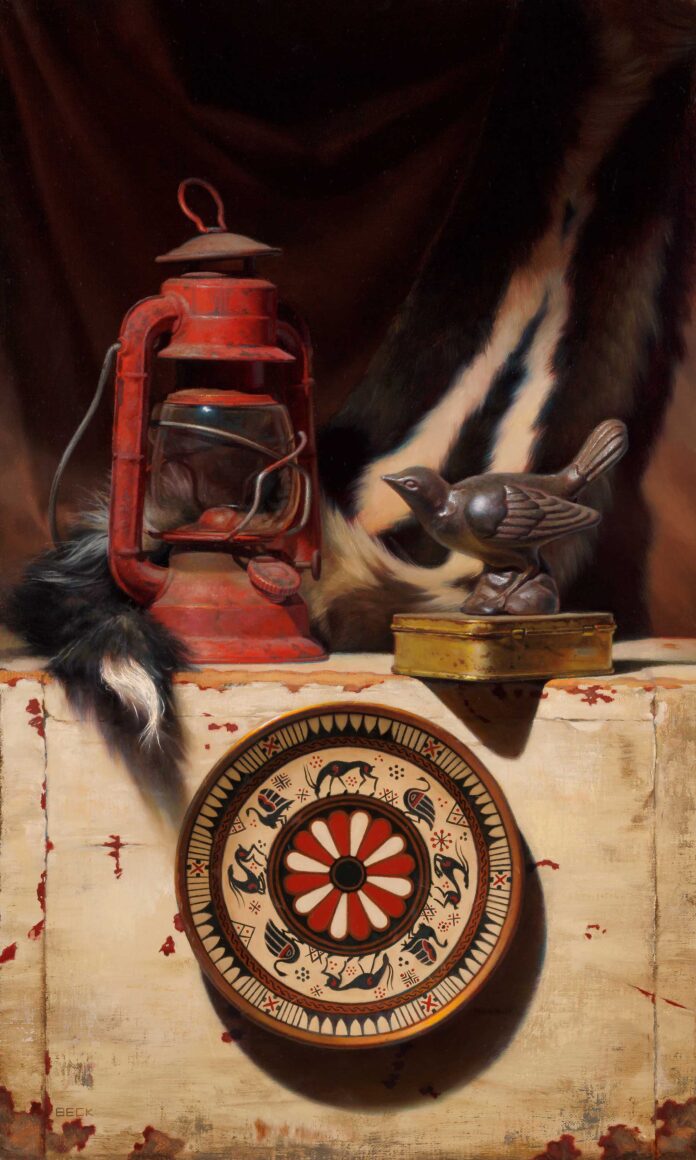There is a lot of superb contemporary realism being made these days; this article by Allison Malafronte shines light on a gifted individual.
Before she was a full-time artist, New York native Julie Beck (b. 1981) majored in mathematics at Rhode Island’s Roger Williams University, where she graduated as class valedictorian. Her true calling as an artist, however, soon found her pursuing more creative endeavors, first as a freelance designer and video editor, then as a self-taught painter. Ultimately Beck landed at the Academy of Realist Art in Boston, where she received five years of training that catapulted her skills to new heights. Now residing in Cambridge, Massachusetts, Beck is a teacher and assistant director at this academy, where she also maintains her studio.
Beck believes representational art is a vehicle to connect with others through a universally understood language. “Humans have an innate desire to connect with others,” she explains. “Representational art transcends spoken language, geography, and time. My commitment to creating accessible and relatable work is an expression and celebration of this desire to connect. I hope that my paintings can inspire others to discover or rethink their perspectives about themselves and their surroundings, as this is the gift that painting has offered me.”
Although Beck depicts multiple subjects — portraits, figures, animals, and still lifes — her approach to painting still lifes is unique. “My portraits, figures, and animals start with a very specific idea and clear direction, and the painting is designed around that concept,” she notes. “My still lifes, however, are a form of ‘play’ or ‘happy accident.’ They start with the pairing of colors or textures, and as the objects are arranged — a process that sometimes takes weeks — a narrative or relationship emerges organically. Because I mostly work from life, once the set-up is complete, all I have to do is paint it.”
One example is “Ashes and Embers,” which began when Beck arranged a selection of red and brown objects, then added some cream and off-white ones to offset the earthy hues. Although this started as a simple exercise in design, it soon took on greater meaning. “Somehow a story, narrative, or deeper meaning always evolves from a rather simple collection of objects,” Beck notes. “We humans look for patterns and relationships in things, whether they were intentional or not. Sometimes that pattern makes itself known during the set-up stage, and other times the meaning is revealed while I’m titling the painting upon completion.”
Connect with the artist at juliebcreative.com.
This article was originally published in Fine Art Connoisseur magazine (subscribe here).
- Become a Realism Today Ambassador for the chance to see your work featured in our newsletter, on our social media, and on this site.





